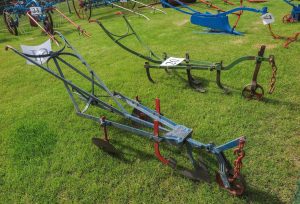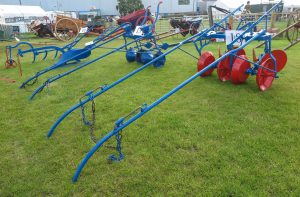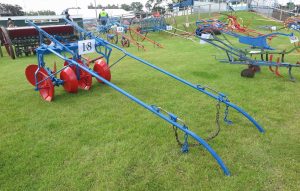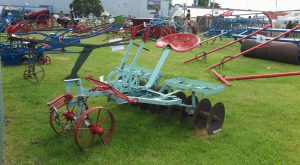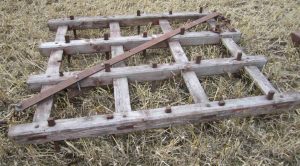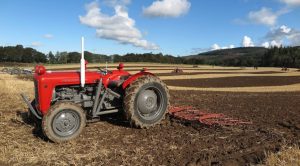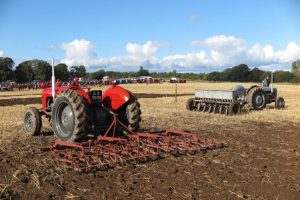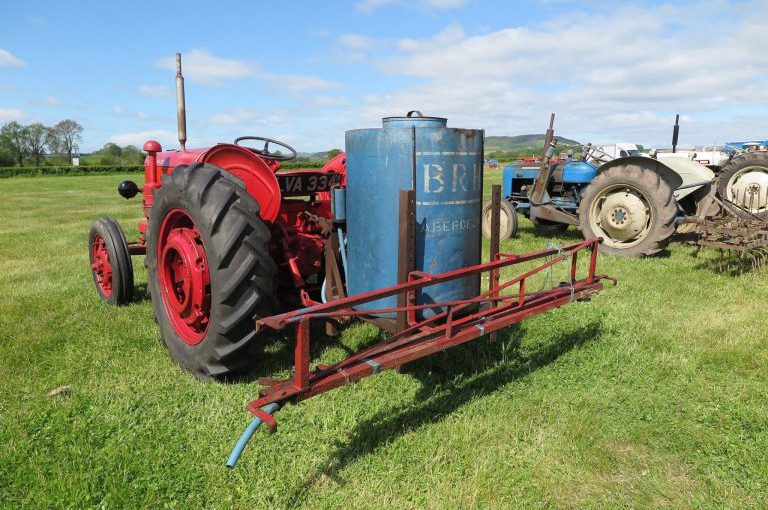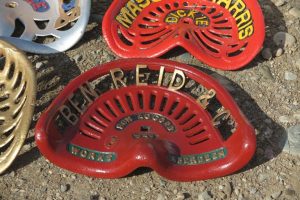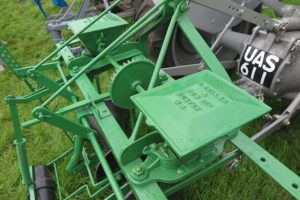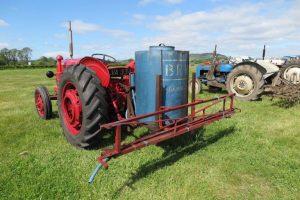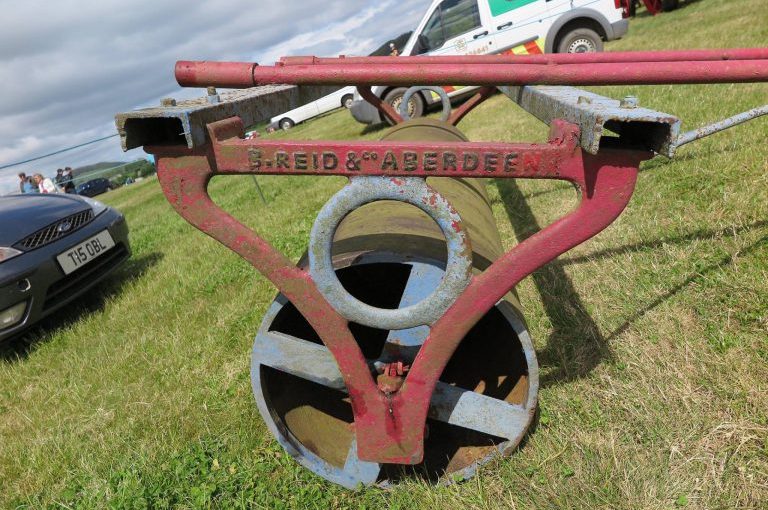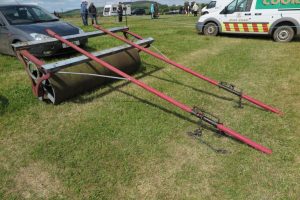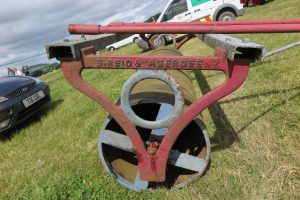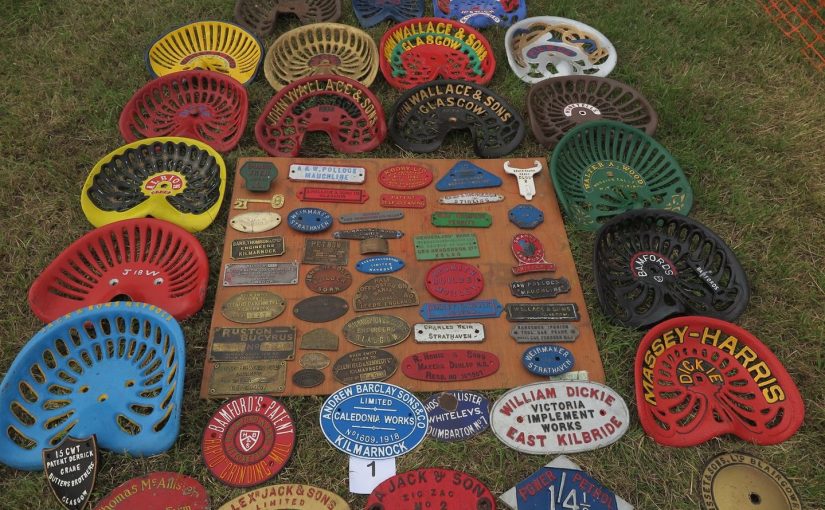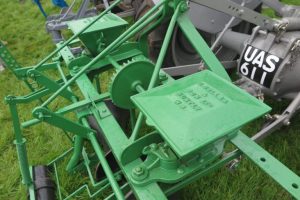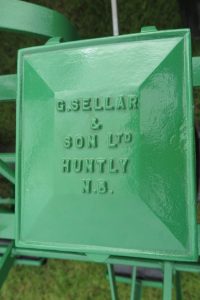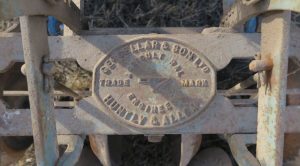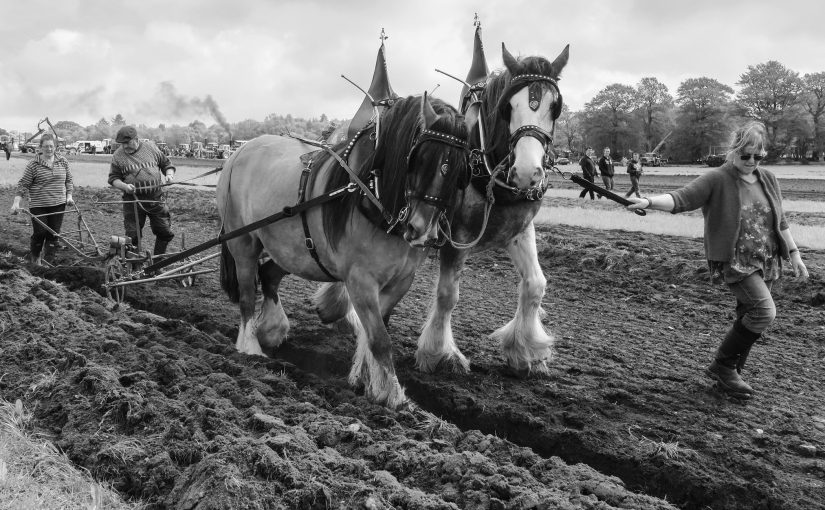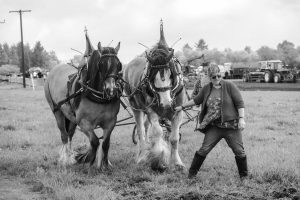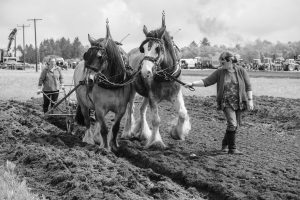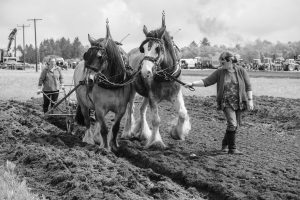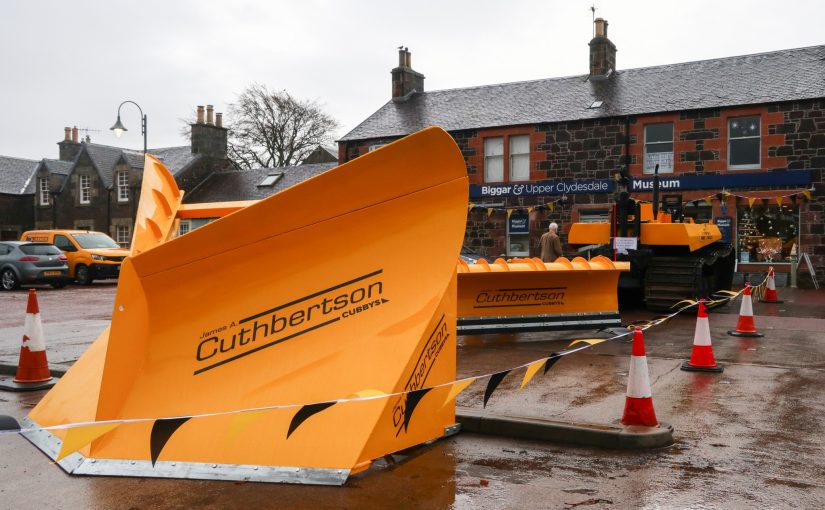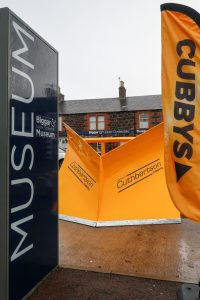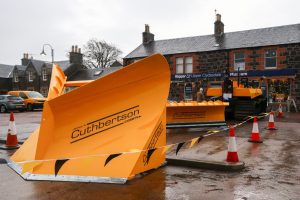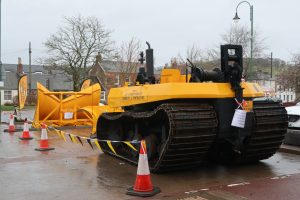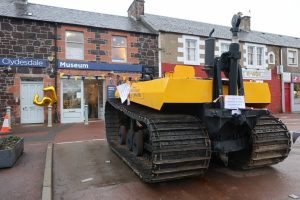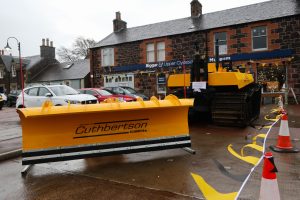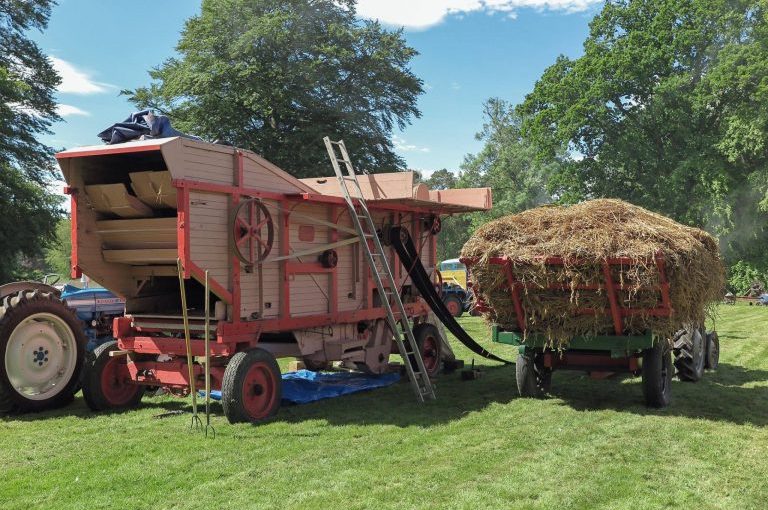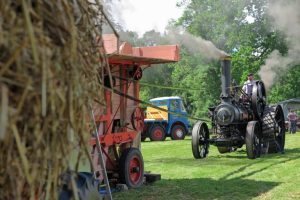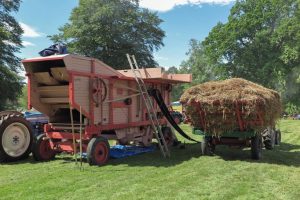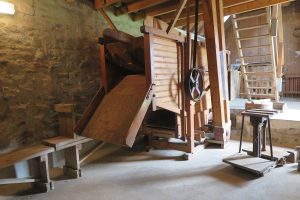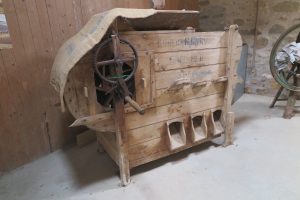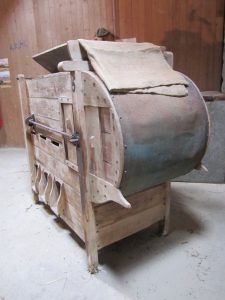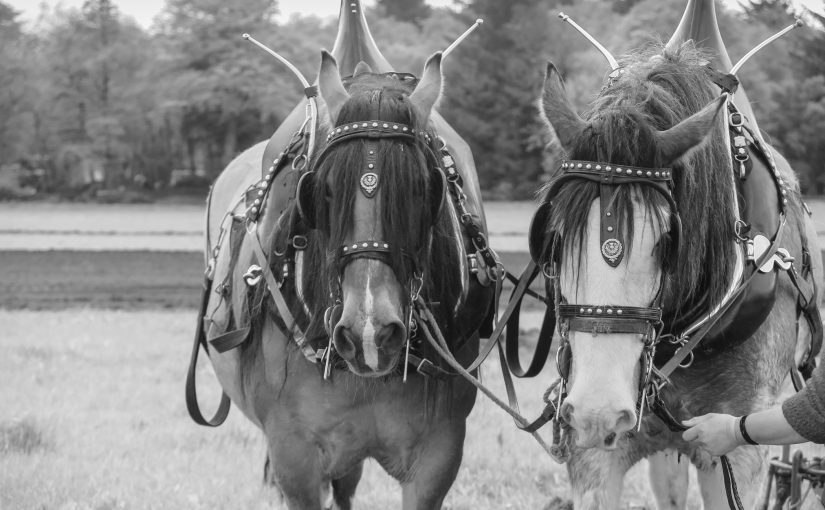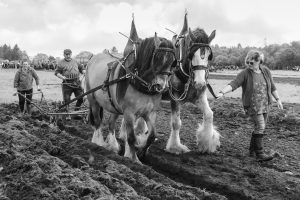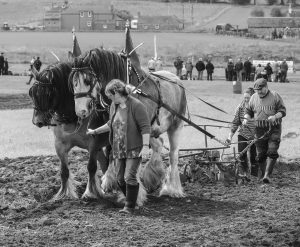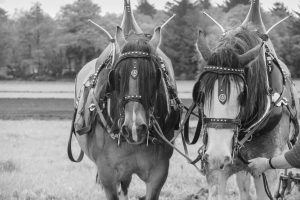Adverts for displenishing sales are a useful source of evidence to see what implements and machines were used on particular farms at a specific point in time. They may include implements and machines that had been used for decades as well as newer ones and the latest technologies. They can show the preference of particular farmers for certain makers and makes of machinery as well. They can also be used to show how widespread some implements and machines were, especially if they were more specialised.
By the early 1950s mechanisation was a key word on Scottish farms. The horse era was giving way to the tractor era and on some farms both kinds of power were used, sometimes for specific tasks. With labour shortages both of full-time and seasonal and casual workers, there was a push to start to find more mechanised ways to deal with the handling, harvesting and processing of crops.
The following selection of adverts from the Strathern Herald in Perthshire shows the implements and machines on a small number of farms in the early 1950s. They show widespread mechanisation with up-to-date implements and machines to undertake a wide variety of tasks from ploughing, sowing, cultivation, management, harvesting and processing of crops.
Implements and machines from key makers were noted. They included names such as Wallace of Glasgow, Newlands of Linlithgow, Allan of Muthly, Dickie of East Kilbride, and Bisset of Blairgowrie. English and north-American names were also represented for some of the implements and machines. They included well-known names associated with particular products such as Albion (Harrison, McGregor & Co. Ltd., in Leigh, Lancashire) for mowers and binders and Massey Harris for corn drills and binders). At some farms there was a preference for particular makers: at Rotteans Farm there was a preference for the Ferguson system with its implements and Fordson with its associated implements.
The farms were using a range of motive power. Rotteans Farm had both tractor and horse implements and machines, with the former focusing largely on ploughing and cultivating implements and machines. Woodside Farm, Auchterarder appeared to be working with horses, no tractor being listed.
Rottearns Farm, Braco (advert, 18 April 1850)
Tractor implements- Ferguson (complete with strakes); D.F. Ferguson plough; S.F. Ferguson plough; Ferguson ridger; Ferguson light cultivator; Ferguson heavy cultivator; Fordson on rubbers (with strakes); Fordson on rubbers (with pulley); bogey (tipper), with float sides; bogey; coup cart; Fordson Major 2-furrow plough; Newlands ridger for Fordson; Albion binder (6ft cut); set S.T. harrows; 2 sets harrows; 2 sets iron front wheels (for Fordson); 1 set iron rear wheels (for Fordson); set M. M. discs; 9 ft roller.
Horse implements- Massey Harris corn drill; Massey Harris binder; Wallace potato digger; Allan potato dresser; Garvie grass seed barrow; Macdonald manure distributor (for horse or tractor); Albion hay mower; saw-bench; harrows; 2 wheelbarrows; 2 hay collectors; 2 oil drums; coup cart (on rubbers); corn cart; horse roller; set saddle harrows; berry plough; drill grubber; potato hopper (2 screens); Dickie swathe turner; 6 raspberry barrels; 3 ladders; 400 stack props; weighing machine and weights; fanners; sack barrow; 6 rolls netting; sheep stakes; a quantity of furniture, and all the usual barn, byre and stable utensils, etc, etc.
Ross Farm, Balgowan (advert, 11 November 1850)
Implements – Fordson tractor on rubbers, double-furrow tractor plough, rubber-tyred box cart, box cart, corn cart, horse roller, turnip barrow, turnip slicer, rick lifter, tractor hay sweep, hay mower (Albion), 2 binders (Albion), manure distributor, corn drill (Massey Harris), potato digger, horse rake, cultivator, grubber, 2 sets iron harrows, set tractor harrows, saddle harrows, set S. T. harrows, 2 Hunter hoes, 3 ploughs, pulper, 2 rubber-tyred hand barrows, hay collector, potato harp, 220 gallon oil tank, fanners, steelyard and weights, sack barrow, 2 oil cabinets, bench and vice and small hand tools, ladders, props, bosses, wire netting, sheep troughs, 80 new posts, 14 milk cans, pails, basins, milk cooler, and all barn and stable utensils, 6 henhouses (portable), 2 brooder houses, 2 brooders, 2 incubators, churn, 2 chemical closets and a small quantity of household furniture.
East Mains Farm, Tulliebardine (advert, 26 May 1951)
Implements-Ferguson tractor, 1949 (with electric lighting), tractor ridger, D.F. plough, Ferguson D.F. plough, 2 R.T. box carts, 2 corn carts, car trailer, grass seed machine (Garvie), 2 Massey-Harris binders, 2 hay collectors, Wallace mower, Bisset mower, Ruston Hornsby mower (oil bath), corn driller, manure distributor (Bisset), hay turner (Nicholson), horse rake (Nicholson), horse roller, cultivator, turnip barrow, pulper, turnip slicer, 2 sheep haiks, set iron harrows, circular harrows, grass seed harrows, drill grubber, steelyard and weights, Dux plough, 110A plough, drill plough, potato planter, sack barrow, R.T. barrow, Hunter hoe, zinc bin, fanners, 3 ladders, electric fence, potato hopper and screens, props, bosses stakes, sheep troughs, netting, chests, 4 henhouses (2 as new), and all barn and stable utensils.
Woodside Farm, Auchterarder (advert, 10 November 1852)
Implements – R. T. general purpose cart convertible to rick lifter, coup cart, R. T. corn cart; hay mower (Bamford), hay collector, binder (Massey Harris), corn driller (Massey Harris), broadcast, hay turner (Massey, as new), horse roller, horse rake, potato digger (Wallace), fitted for tractor, turnip barrow, drill plough, 2 Dux ploughs, 2 sets iron harrows, 3 drill harrows, steelyard and weights (white), pulper, R. T. sack barrow (as new), 2 corn bins, R. T. dogcart, ladder, 3 sets cart harness, set pony harness, 12-bore gun, and all the usual barn and stable utensils, 50-gallon oil cabinet, scrap iron, surplus furniture.
Kipney, Logiealmond (advert, 1 November 1952)
Implements – Fordson row crop tractor (on rubbers), Fordson tractor (on irons), 2 D. F. tractor ploughs, tractor bogie, tractor cart (rubber tyred), tool bar, potato spinner, McCormack binder, Bisset binder, Jack potato digger, Wallace hay mower, hay sweep, Bisset manure distributor, corn drill, cultivator, 3 sets iron harrows, set circular harrows, set chain harrows, set spring tooth harrows, set drill harrows, drill plough, hay rake, grass seed machine, turnip barrow, double driller, set elevator fanners, weighing machine and weights, cake breaker, hay cutter, turnip pulper, turnip slicer, wheel barrow, sack barrow, ladders, bench, vice and tools, anvil, bellows and tools, 100 gallon paraffin drum, 40 gallon paraffin drum, guddle and mell, pig feeder (dry), fireclay troughs, sheep troughs, forks, rakes, shovels, spades, picks, brooms, lanterns, sheep nets and stakes, potato screen, riddles, baskets, quantity of wood, usual barn and stable utensils. Also 3 hen houses, 6 coops and runs, quantity household furniture and dairy utensils.


